
Introduction: The Problem With Siloed Release Management in Salesforce
Imagine your Salesforce development team and admins each doing their own thing: continuously building several features in isolated orgs, keeping notes to themselves, and releasing on separate timelines. It’s a great recipe for confusion. When teams work in silos, Salesforce releases become a chaotic mix of overlapping changes and last-minute surprises.
For example, if multiple developers share one sandbox for too long, changes overlap, environments drift from production, and conflicts happen. Each group might be making important updates, but without a unified process, they often step on each other’s toes.
Siloed release management leads to poor visibility. One team might not know what another is doing until deployment day, and by then, it’s too late. As Salesforce’s guidance notes, “Getting visibility across teams is a key part of better managing your applications”. Without that visibility, you risk duplicate work, inconsistent configurations, and painful merge conflicts in your Salesforce org. It’s frustrating for everyone involved: developers overwrite admin changes (or vice versa), testers find unforeseen bugs because one feature didn’t know about another, and releases get delayed.
The solution? No more silos! A unified Salesforce release management strategy brings all these efforts together into one coordinated process. Instead of each team working in isolation, everyone collaborates transparently on releases.
Insight:
The 2024 Accelerate State of DevOps study shows that the very best teams all run their changes through one shared, automated release pipeline.
Thanks to that single path, they move code 127 times faster, ship updates 182 times more often, see eight times fewer outages, and fix problems 2,293 times quicker than teams working with separate, manual steps. In short, using one unified pipeline is what gives top performers more speed, fewer errors, and rapid recovery.
In this article, we’ll explore how a unified release approach helps bring teams together and answer common questions about improving your Salesforce release management process.
- Why Do Siloed Teams Struggle with Salesforce Release Management?
- What Is a Unified Salesforce Release Process, and Why Do You Need One?
- What Are Some Salesforce Release Management Best Practices to Keep Teams Aligned?
- #1. Give Each Feature a Dedicated Environment
- #2. Use Version Control as Your Source of Truth
- #3. Adopt a Simple, Collaborative Branching Strategy
- #4. Bundle and Test Changes as a Release Before Deploying to Production
- #5. Automate Where Possible (CI/CD, Testing, and Org Setup)
- #6. Ensure Continuous Communication and Feedback
- How Can Automated Release Management for Salesforce DevOps Make Life Easier?
- Which Salesforce Release Management Tools Can Help Unify the Process?
- Key Features to Look for in a Release Management Salesforce Tool
- In Summary: A Unified Salesforce Release Management Strategy for Team Success
By the end, you’ll understand why working together is better than working apart and how to achieve it with the right tools.

Why Do Siloed Teams Struggle with Salesforce Release Management?
When Salesforce teams work in silos, a lot can go wrong. Lack of coordination is the biggest culprit. Each silo, be it a dev team, an admin team, or a QA group, might manage changes independently, but Salesforce orgs are shared resources. Without a unified plan, changes can collide.
Cause #1. Overwriting Someone Else’s Work
One common scenario is an admin quietly modifying some Salesforce configuration (like adding a new field or workflow) in a sandbox while a developer is deploying code that touches the same components. Because they didn’t coordinate, whoever deploys last might overwrite the other’s work. The result is broken functionality or unexpected behavior in production.
Cause #2. No Single Source of Truth
Siloed release management also means no single source of truth for changes. Perhaps admins use change sets manually, while developers use Git and CI/CD. If these streams don’t converge until a late stage, it’s easy to miss dependencies. Teams may only discover conflicts during a big deployment push, leading to a furious race to fix errors. It’s important to spot potential overlaps or conflicting changes early during planning and development so you can avoid bigger issues later on. In siloed setups, those overlaps are found late, if at all.
Cause #3. Environment Drift
Another struggle is environment drift. Siloed teams often maintain separate sandbox environments for too long without syncing. Developer sandboxes might be weeks behind production, and admin sandboxes might have hotfixes that never made it to the dev org. This drift means that work in one environment fails in another. Testers then get inconsistent results, and deployments from a stale sandbox can accidentally reintroduce old bugs. It’s messy!
Cause #4. Communication Breakdown
Finally, siloed teams suffer from communication breakdown. When each team is focused only on its own tasks, nobody has the full picture of the release. There’s no shared timeline or clear ownership of who deploys what, when. This often results in duplicated effort: two people building the same or overlapping thing, or important steps being missed, like forgetting to run tests because each thought the other did it. In short, siloed Salesforce release management is prone to errors, delays, and a lot of stress for your Salesforce admins and developers.
The frustration of these struggles is exactly why many organizations are now moving toward unified release management. Bringing everyone onto the same page, literally and figuratively, can eliminate these pain points.
Let’s look at what a unified process entails and how it addresses the chaos of siloed work.
What Is a Unified Salesforce Release Process, and Why Do You Need One?

Definition of Unified Salesforce Release Process
A unified Salesforce release process means the whole team follows one coordinated approach to build, test, and deploy changes.
Instead of each role doing releases in their own siloed way, everyone (developers, admins, architects, consultants, QA, you name it) collaborates through a single streamlined workflow. In practical terms, it often means using common tools, like a shared version control repository, and coordinated steps for moving changes from development to production.
The Purpose of the Unified Salesforce Release Process
The goal of a unified process is to have one source of truth and one pipeline for Salesforce changes.
For example, rather than an admin’s changes living only in a sandbox and a developer’s changes living only in Git until deployment, all changes eventually come together in Git or another source control and go through the same release pipeline. This ensures that everyone sees and accepts what is being deployed.
One key element is empowering less-technical team members to participate in this pipeline. The good news is that modern Salesforce DevOps solutions allow admins to contribute without needing to write code. In other words, a unified release management process lets an admin’s point-and-click config changes and a developer’s code changes flow together in harmony.
Why Do We Need the Unified Salesforce Release Process?
Reason #1: Because it keeps everyone on the same page. When you unify the release process, there are no “mystery changes” popping up unexpectedly. Every change is tracked, typically in a shared backlog of features or user stories. Teams discuss upcoming releases together, rather than handing changes off without talking. This collaboration reduces the chance of conflict.
Reason #2: A unified process also gives greater visibility and control. You can see all proposed changes in one place, for example, a list of Git pull requests or a release dashboard. This makes it easier to do impact analysis and avoid surprises. If two features conflict, you’ll spot it early when everything is visible centrally. Contrast that with siloed work, where you might only discover a conflict during a deployment – yikes.
Reason #3: Faster, more frequent releases. It sounds counterintuitive, but moving to a single coordinated release pipeline often speeds things up. When everyone uses the same process, you automate handoffs that used to be manual. Developers don’t have to wait on admins to manually deploy a change set, and admins don’t have to wait on developers for an environment – the unified pipeline handles it. Teams can deliver updates continuously (or on a regular schedule) with confidence because the process is repeatable and known to all.
This way, a unified Salesforce release process is the antidote to the confusion of siloed work. It provides a single, agreed-upon way of delivering changes that everyone participates in together. This not only prevents the typical errors and conflicts but also builds a stronger sense of teamwork. The entire team feels ownership of the release, rather than an “us vs. them” mentality.
When done right, you get smoother releases, happier team members, and more time spent building cool features instead of fighting deployment fires.
What Are Some Salesforce Release Management Best Practices to Keep Teams Aligned?

Implementing a unified process might sound daunting, but there are proven best practices for Salesforce release management that make it smoother and more team-friendly. Here are some of the top best practices to help break down silos and keep everyone in sync:
#1. Give Each Feature a Dedicated Environment
Avoid long-lived shared dev sandboxes. Instead, create a fresh scratch org or sandbox for each new feature or user story.
Short-lived feature environments ensure that developers aren’t overwriting each other’s work. Because when developers share sandboxes or orgs for too long, things get messy. By giving each dev their own isolated org that closely mirrors production, you prevent overlap and configuration drift.
Tools that offer scratch org and/or sandbox pooling can make this easy by providing ready-to-use orgs on demand for each feature. Developers can start working immediately without waiting, and once the feature is done, the org can be disposed of. This keeps your work clean and separate until you’re ready to integrate.
#2. Use Version Control as Your Source of Truth
If you’re still relying on change sets passed around or manual metadata migration, it’s time to modernize. Adopting version control is foundational to aligning teams. It provides a single repository where all changes are tracked. That means admins and devs commit their changes to Git, and yes, even declarative changes can be tracked! Using source control enables parallel development without chaos. With everything in Git, you can see exactly what’s changing, roll back if needed, and avoid the “who changed this?” mysteries.
#3. Adopt a Simple, Collaborative Branching Strategy
How you structure your version control branches can either create silos or break them. A best practice is to use a trunk-based development approach: keep a main branch, often corresponding to production, and spin off short-lived feature branches for work in progress. This is far simpler and more team-friendly than maintaining separate long-running branches for each environment or team, which can become silos of their own.
With a single main-branch workflow, once a feature is complete, it’s merged back to main, after review/testing, and becomes part of the next release. Everyone’s work consolidates rapidly, and you don’t have dozens of diverging code lines. Continuous integration is easier, and conflicts surface early.
In short, one main branch + feature branches = less confusion.
#4. Bundle and Test Changes as a Release Before Deploying to Production
While it’s great to develop features independently, you shouldn’t deploy each little change to production in isolation without integration testing.
Releasing individual bits one by one can be risky: you might miss how they interact. Instead, group approved features into a release candidate and test that as a whole. Think of it like a “draft release” in a staging environment. Salesforce teams often create a UAT (User Acceptance Testing) sandbox or use a scratch org to aggregate all completed work for the next release. By practicing this, your QA can do end-to-end testing on the combined changes, and stakeholders can do user acceptance testing on a realistic set of features. Only when the bundle looks good do you promote it to production.
This approach catches integration bugs early and ensures a smoother prod deployment.
#5. Automate Where Possible (CI/CD, Testing, and Org Setup)
Automation is a Salesforce release manager’s best friend. Wherever a manual step can be replaced with an automated script or tool, do it.
Automated testing, like running unit tests and regression suites on every commit or merge, helps catch problems before they make it into a release. Continuous integration tools can automatically build and validate deployment packages. This reduces human error and frees your team from tedious tasks.
Beyond CI/CD, think about automating org setup and data seeding too. For instance, if every developer needs similar test data in their scratch org, provide a script or one-click button to load that data.
Some Salesforce release management tools allow you to use custom scripts or buttons to do things like load sample records or install packages in one go. This not only saves time but also ensures all environments are consistent. In a unified process, an admin shouldn’t have to ask a developer, “Hey, can you deploy this for me?” nor should a dev have to say, “I’m waiting for an org”. Automation fills those gaps.
#6. Ensure Continuous Communication and Feedback
Finally, even with all the best technical practices, don’t forget the human element.
Encourage a culture of openness around releases. Have regular check-ins or stand-ups focused on releases, where each team member can share what they’re working on for the upcoming deployment. Maintain a shared release calendar or dashboard visible to everyone. This way, no one is surprised by a deployment date or feature inclusion.
If something is going to miss a release, communicate it. Unified release management thrives on transparency: everyone should know the plan and status. Strong guidelines for team communication and governance keep the process smooth.
In short: communicate with each other. The tools and processes can only do so much if aligned teams trust and inform each other consistently.
By following these best practices, Salesforce teams can greatly reduce the pains of siloed work. It might take some adjustments, especially moving to source control or new tools, but the payoff is huge: fewer errors, faster deployments, and a team that actually enjoys working together on releases. It sets up a positive cycle: smooth releases build confidence, which encourages even more collaboration and innovation.
How Can Automated Release Management for Salesforce DevOps Make Life Easier?

If the best practices above sound like a lot of steps, don’t worry – automation is here to help. Automated release management refers to using tools and scripts to handle many of the repetitive or complex parts of deploying Salesforce changes. Embracing automation in your Salesforce DevOps process can significantly reduce stress and errors. Here’s how it can make your life easier:
- Fewer Errors & Rollbacks: Manual deployments, clicking change sets, and deploying by hand are prone to human error. It’s easy to miss a component or deploy things out of order. Automation ensures the same steps run the same way every time. For example, a CI/CD pipeline can automatically validate that all required metadata is included and run all tests before anything touches production. This catches issues early.
- Speed and Efficiency: What used to take hours (or days) can often be done in minutes with automation. For instance, spinning up a new sandbox and loading it with data might be a half-day task for an admin. But an automated approach could do it in a few clicks or as part of a nightly job. Salesforce release management tools like Hutte focus on speeding up these operations.
- Consistency Across Environments: Automation makes it easier to keep all your orgs (dev, test, prod, etc.) in sync. For example, you might script the creation of a scratch org so that it always has the same baseline config as production: installed packages, required data, etc. With an automated release pipeline, you can deploy the exact same metadata to a testing org that you will later deploy to prod, virtually guaranteeing “what we tested is what we launch.”
- Better Collaboration Through Visibility: When you automate your release process, it often comes with a nice side effect: a centralized view of the pipeline. Team members can see at a glance which build is in progress or which release is in UAT versus which is live in production. Many Salesforce DevOps tools have dashboards that show the status of each environment and upcoming releases. This kind of visibility keeps the team aligned without constant meetings.
- One-Click Deployments and More: Modern Salesforce release management tools enable one-click or one-command deployments. Instead of manually retrieving metadata, uploading a change set, validating, etc., you might just press a “Deploy to UAT” button, and the tool handles the rest. The same goes for creating orgs or merging changes: a well-established DevOps setup lets you trigger these tasks with minimal effort.
For example, Hutte provides a UI where even non-engineers can commit and pull changes at the push of a button. An admin can initiate a deployment without waiting on a developer, because the heavy lifting (script execution, Git operations, etc.) is all automated behind that button. It brings the team together by removing technical barriers that used to silo people into roles.
Automated release management takes the time-consuming work and risk out of deployments. By investing time in setting up a solid Salesforce DevOps tool, or just adopting a platform that provides it out of the box, you end up saving countless hours in the long run.
Not only does life get easier, but your Salesforce org’s quality and reliability will improve because you’re consistently applying best practices through automation. It’s a win-win: less routine work for the team and smoother releases for the business.
Which Salesforce Release Management Tools Can Help Unify the Process?

Bringing a whole team onto a unified release process might sound challenging, but luckily, there are Salesforce release management tools built to make this much easier. These tools act as the central platform for your releases, often providing an intuitive UI on top of all the best practices we’ve discussed. Here are a few categories of tools, and some examples, that can help break down silos:
Category #1. Salesforce Native Tools: Change Sets and DevOps Center
Salesforce’s built-in solution for deployments has long been change sets. But change sets alone don’t unify teams well: they’re manual and siloed by nature. Salesforce’s DevOps Center is a big step toward a unified process.
It’s a free tool from Salesforce that lets admins and devs track changes in a single pipeline with source control under the hood. DevOps Center introduces work items and a flow where changes are pulled from sandboxes and pushed to a repo, then deployed to environments in a sequence. It’s a good starting point that helps teams get used to a common pipeline.
However, it has some limitations, and larger teams often outgrow its capabilities or desire a more flexible solution.
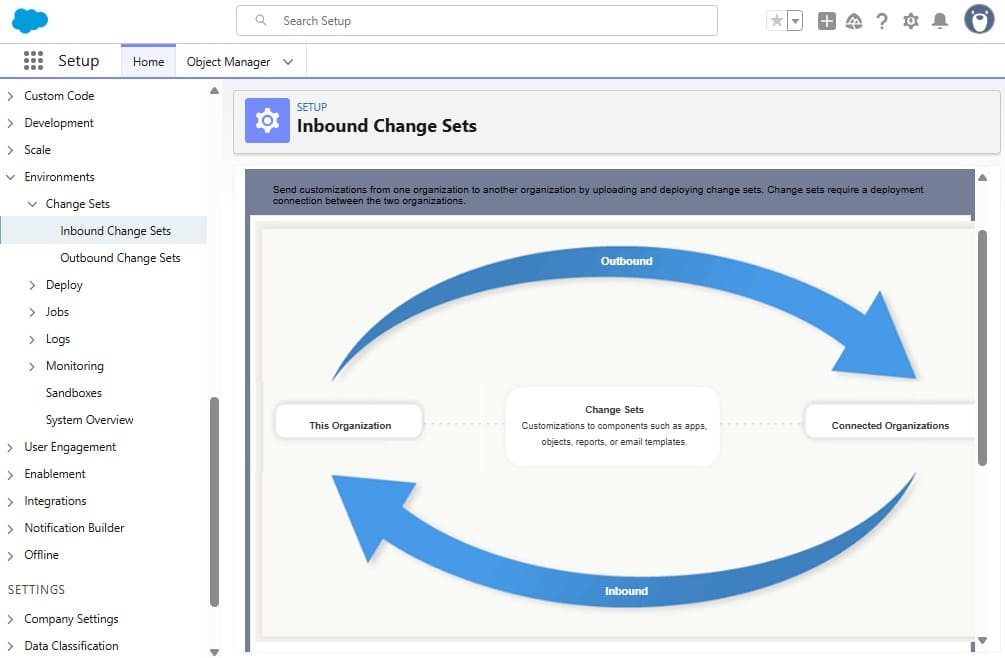
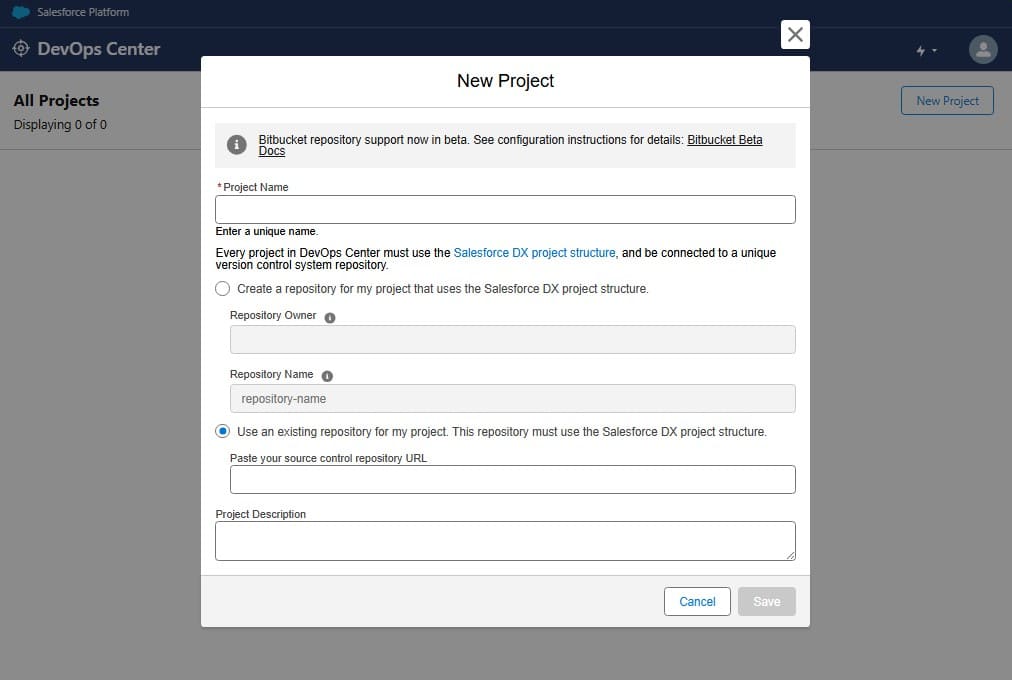
Category #2. Third-Party Salesforce Release Management Platforms
We know that Salesforce software developers will always be there to help when it comes to extending Salesforce functionality to increase convenience and efficiency.
There are commercial tools designed specifically for Salesforce DevOps and release management. For example, Hutte is a Salesforce DevOps tool that focuses on making Git and automation accessible to everyone on the team. It has a fast, intuitive user interface and can be set up in minutes, so even non-developers can jump in quickly. Hutte also handles org management, including scratch org and sandbox pooling, environment seeding, and release bundling (grouping features into releases).
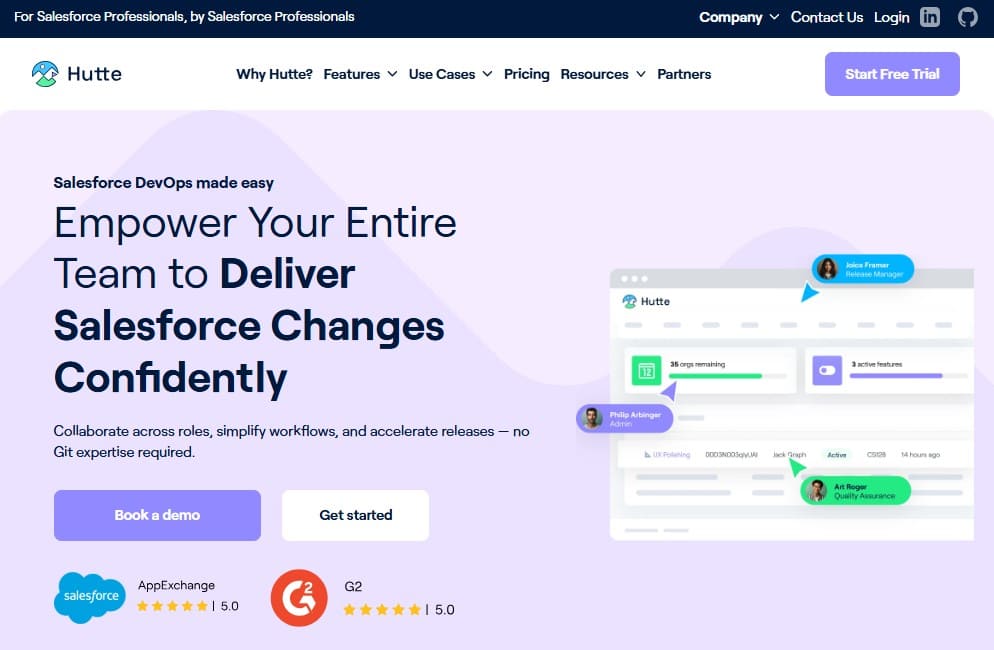
Category #3. Build-Your-Own CI/CD Pipelines
Some teams opt to build their own pipeline using general-purpose CI/CD tools like Jenkins, Azure DevOps, or GitHub Actions. This can work, especially if you have DevOps expertise on hand. You’d script the retrieval of changes, run tests, and use the Salesforce CLI to deploy to orgs.
While powerful, this DIY approach can be complex to maintain and might be difficult for less technical team members. Also, disadvantages of this approach were highlighted by GitLab’s 2024/25 survey of 5,000+ DevOps professionals, which found that more than half of teams run six or more isolated tools, and 78% lose up to three-quarters of their day just stitching those tools together. Nearly 64% want to consolidate onto one platform because “DIY toolchains slow releases, raise costs, and drain morale.”
For most teams looking to eliminate silos, adopting a dedicated Salesforce release management tool provides the quickest path to success. These tools are built to enforce best practices while smoothing out the user experience.
A tool like Hutte, for example, offers a web-based workspace where admins can click to create a sandbox or scratch org, make their changes, and then, with another click, generate a pull request to commit those changes, all without dealing with Git commands. Meanwhile, developers can still use their beloved CLI and have their work show up in the same release dashboard.
Hutte’s approach ensures that every merged change gets added to the next release regardless of how the work is contributed: declaratively through Hutte or through the CLI. This helps unify the release process for the entire team. That’s exactly the kind of unity we’ve been talking about.
Key Features to Look for in a Release Management Salesforce Tool

When evaluating tools, consider these features as must-haves for team unity:
- Environment management: Quickly create, reset, and manage scratch orgs or sandboxes for every team member or feature.
- Version control integration: Seamlessly track and manage changes in Git so that all updates are visible, traceable, and auditable.
- CI/CD automation: Automate builds, tests, and deployments to streamline the Salesforce release process and cut down on manual work.
- Accessible UI: A clear and simple interface so both technical and non-technical team members can contribute without confusion.
- Role-based access: Set different access levels so developers, admins, and managers each have the right tools and permissions.
- Acceptable learning curve: Easy to adopt and quick to get started, so your team sees value without a long setup or training phase.
- User reviews and ratings: Strong community feedback can signal tool reliability. For example, the aforementioned Hutte is one of the top-rated Salesforce DevOps solutions on AppExchange.
Ultimately, the right tool will act as a “bridge” between siloed roles. It should enable collaboration by making all changes and releases visible in one place and by giving each persona what they need. Admins should feel at home with point-and-click deployment options, and developers should be able to integrate their Git workflows, all feeding into the same pipeline.
Is Salesforce’s native solution too limited? Try out Hutte, which was built with this “no more silos” philosophy in mind. Hutte provides a free trial and is available on the Salesforce AppExchange, so you can explore how it works for your team.
Of course, every team is different, so choose the tool that best fits your size, skill sets, and release complexity. The main thing is that it makes unified release management practical and simple, because if it’s simple, the team will really use it!
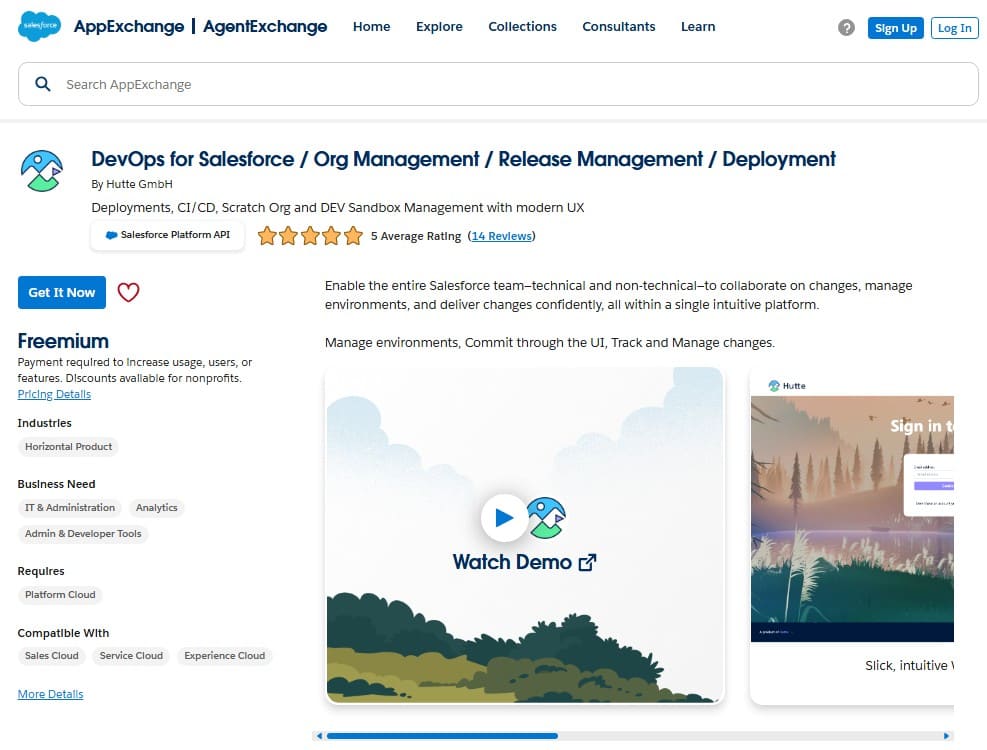
In Summary: A Unified Salesforce Release Management Strategy for Team Success
Siloed teams might have been the norm in the past, but as we’ve seen, they don’t set you up for success in the long run. Embracing a unified Salesforce release management strategy can truly bring your teams together. When everyone from admins to developers and testers is following the same playbook, releases become less about fighting fires and more about delivering value.
By introducing best practices like dedicated feature environments, version control, integrated release testing, and automation, you pave the way for smoother deployments and happier teammates. Communication flows better, trust builds, and the “us vs. them” mindset fades away. No more last-minute surprises or finger-pointing, just a well-established process where the whole team wins together.
Remember, the goal of “no more silos” isn’t achieved overnight. Start with small steps: maybe introduce a source control system or set up a weekly sync for everyone to discuss upcoming changes. Step by step, bring in the tools and practices that make collaboration the path of least resistance. Before you know it, you’ll have a release management process that feels natural, where everybody knows their part and how it fits into the bigger picture.
If you’re wondering where to begin, consider leveraging a Salesforce DevOps tool designed for this very purpose. As discussed, platforms like Hutte can jump-start your journey by providing a unified workspace out of the box. They embody many of the principles we’ve covered: from easy org management to automatic release bundling, all in one package.
Adopting such a tool can accelerate the cultural shift to unified releases. It’s like giving your team a common rallying point, backed by technology that enforces the best practices under the hood.
In the end, unified release management is about making life easier and work more productive for your Salesforce teams. When releases become smooth rather than scary, it boosts morale and frees up time for innovation. So, take the leap toward breaking down those silos. Encourage collaboration, equip your team with the right tools, and watch as your Salesforce release process transforms into something that brings people together.
No more silos – just one connected, collaborative team delivering awesome Salesforce features to your users, again and again.

Mykhailo is a Salesforce Certified Platform Administrator with development experience in the fintech field. Since 2021, he has gained the Double Star Ranger rank on the Salesforce Trailhead education platform, where he acquired 26 Superbadges in Business Administration, Process Automation, Security, and more. With a decade of expertise in consulting and compliance, he aspires to translate complex technical concepts into accessible content, helping organizations make the most of Salesforce. Mykhailo is passionate about using technology for everyday needs, enjoys reading sci-fi and non-fiction books, and playing video games. He also has an interest in history and outdoor activities such as hiking, camping, and kayaking.


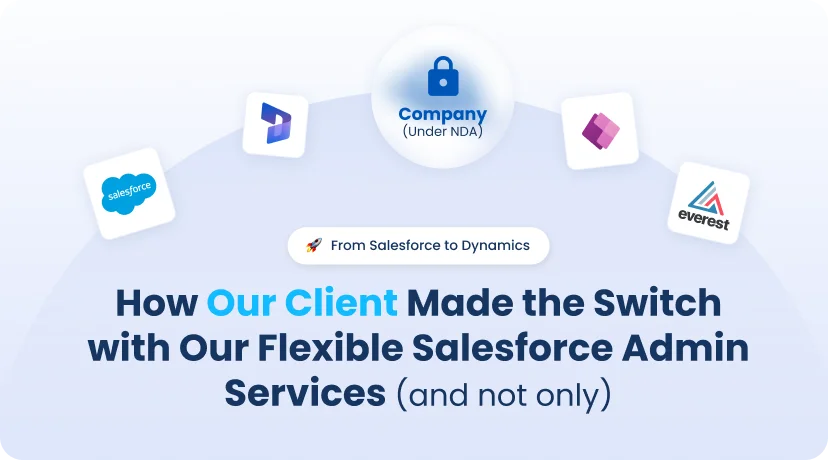


 Previous Post
Previous Post Next Post
Next Post